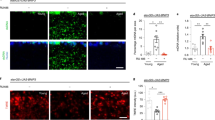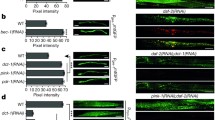Abstract
To explain trends emerging from the study of longevity mutants, a modification of the reactive oxygen species (ROS) model of aging is suggested.
ROS do not appear to be produced in greater quantities during cellular activity unless specific factors are also present. These include raised cytosolic calcium and sodium ions, nitric oxide (NO) or dopamine. Metabolically active cells that are repeatedly exposed to these factors, especially in combination, show the most ROS damage and may contribute most to aging. This explains the importance of neurons, which is highlighted by genetic studies, and points to which cells are the most aging-sensitive.
Control pathways disrupted in long-lived mutants are those which control one or more of these ROS promoting factors. The daf-2/daf-16 pathway may interact with these factors in several ways. Changes in control networks may be propagated from a relatively small number of cells/junctions by neural connectivity and hormonal means.
Similar content being viewed by others
Author information
Authors and Affiliations
About this article
Cite this article
Driver, C. An hypothesis concerning control networks and aging in Drosophila melanogaster and Caenorhabditis elegans. AGE 24, 173–177 (2001). https://doi.org/10.1007/s11357-001-0018-0
Issue Date:
DOI: https://doi.org/10.1007/s11357-001-0018-0




